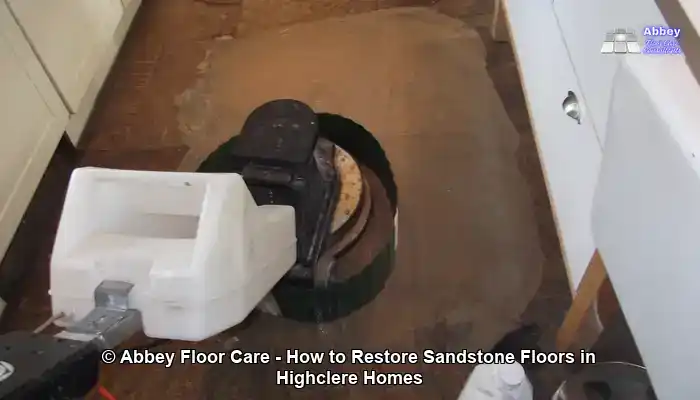
Last Updated on November 14, 2025 by David
Essential Techniques for Successfully Restoring Sandstone Floors in Highclere Homes
- Comprehend the Porous Characteristics of Sandstone: Sandstone is a naturally porous material that requires careful handling. Its sensitivity demands that gentle and stone-safe cleaning methods be used to prevent etching or erosion, ensuring that the floor retains its beauty and integrity.
- Employ pH-Neutral Cleaners for Regular Maintenance: For routine care, pH-neutral cleaners work best, while for more intense soiling, alkaline solutions can be used—but always follow with a thorough rinsing and resealing to maintain the surface.
- Ensure Proper Maintenance of Topical Sealers for Optimal Protection: When properly maintained, topical sealers enhance the colour and protect the surface of the sandstone, particularly in busy areas or decorative zones.
- Adhere to Correct Restoration Techniques for Lasting Results: Restoration requires meticulous surface preparation, safe agitation, and thorough rinsing without residues, followed by sealing to guard against future staining.
- Implement Regular Maintenance Routines: Adopting a regime of regular maintenance using soft tools and responding quickly to spills is vital to preserve the finish and minimise the need for deep cleaning cycles.
What Distinguishes Sandstone from Other Stone Types?

Delving into the Composition and Porosity of Sandstone
Sandstone is classified as a sedimentary stone, formed from compacted sand and mineral particles. This inherent porosity allows it to absorb moisture and stains if it is not sealed adequately. The surface texture can be smooth or rough, depending on the cutting and finishing methods employed. However, all types of sandstone flooring share a fundamental requirement: they necessitate gentle, stone-safe care to preserve both their structural integrity and aesthetic appeal over an extended period. Understanding this is crucial for any homeowner keen on maintaining their sandstone floors.
Identifying Common Issues Faced by Highclere Homes with Sandstone Floors
In Highclere and its neighbouring regions, sandstone floors are a prevalent feature in older residences and period properties. However, over time, consistent foot traffic, harsh cleaning chemicals, and seasonal moisture can contribute to surface wear, uneven discolouration, and diminished effectiveness of the sealant. Given that sandstone is softer than granite or slate, it is inherently more susceptible to erosion. Therefore, consistent care and maintenance become essential to preserving both its visual appeal and functional qualities, ensuring that it continues to enhance the beauty of the home.
Expert Recommendations: Top Products for Daily Sandstone Care
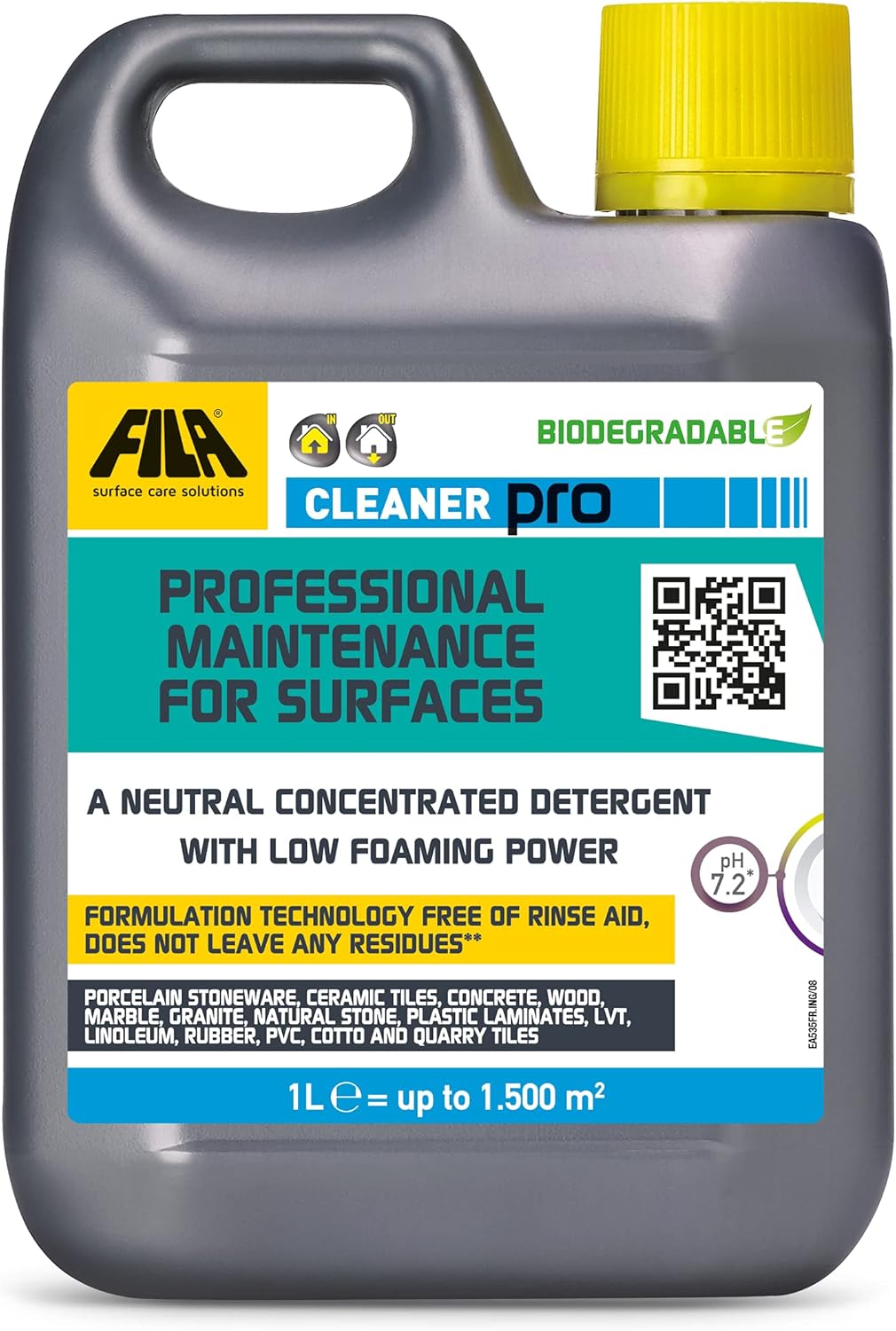
Fila Pro Floor Cleaner
|
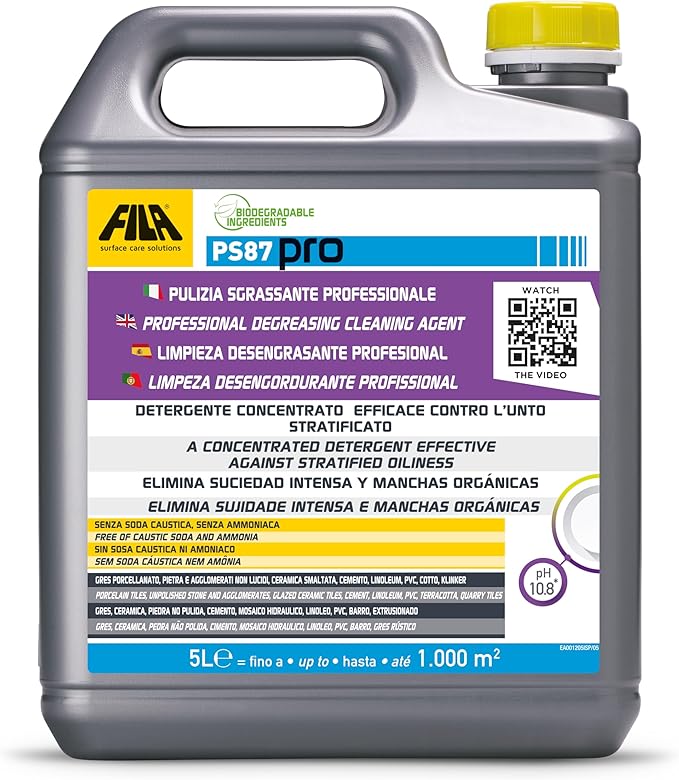
FILA PS87 PRO
|
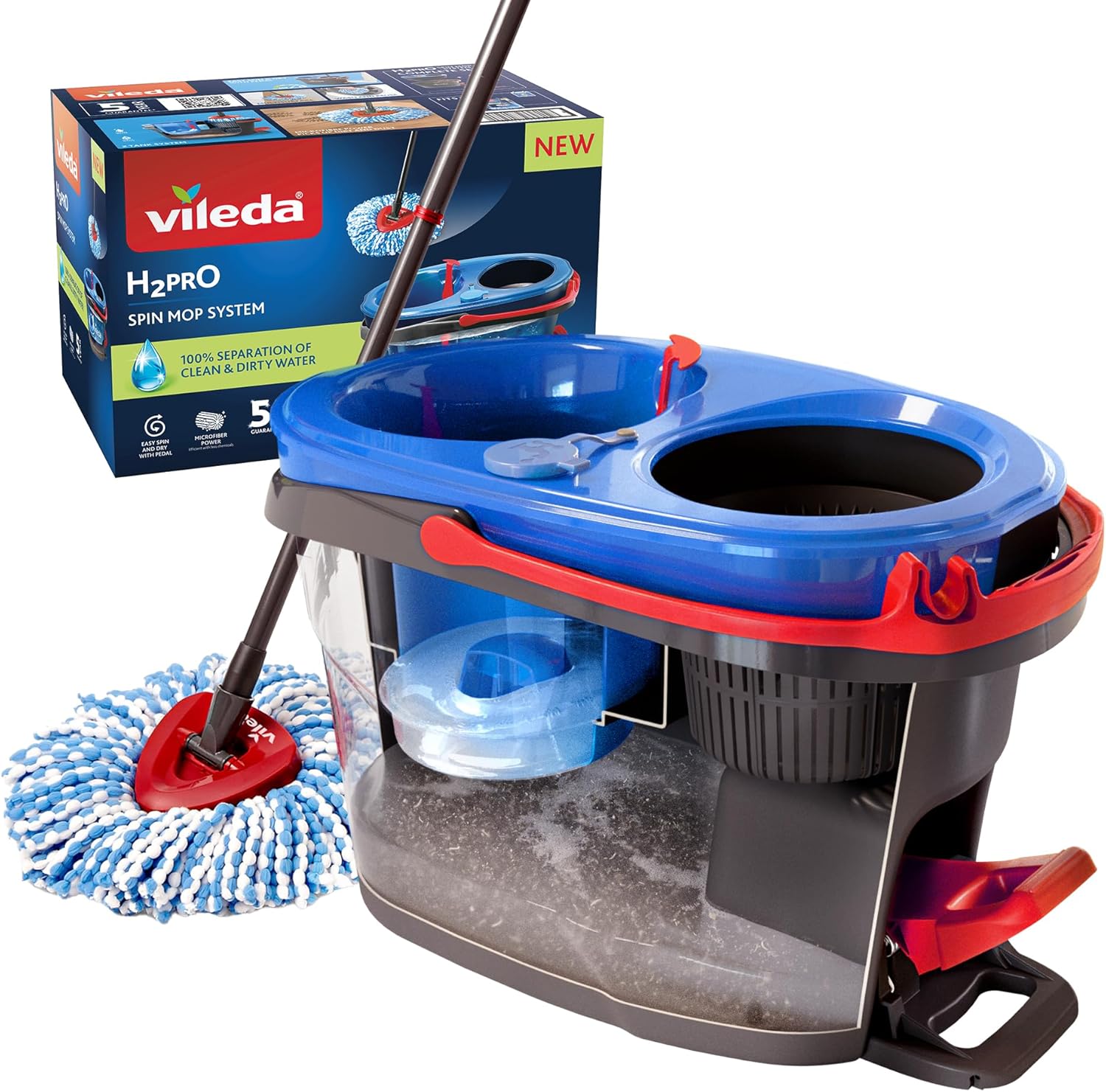
Vileda H2PrO Spin Mop System
|
What Indicators Suggest That Your Sandstone Floor Needs Restoration?
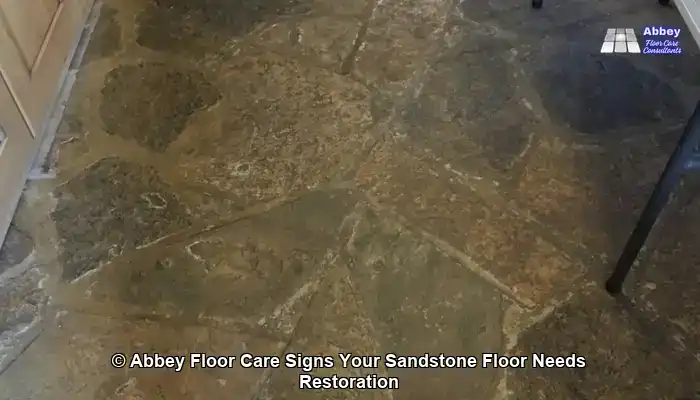
Recognising Surface Wear and Discolouration on Your Sandstone Floors
As time progresses, sandstone floors may begin to lose their natural colour and texture due to factors such as foot traffic, cleaning residues, and exposure to moisture. If the surface appears patchy, dull, or uneven, this can signal that the protective layer has degraded, allowing the stone to more readily absorb dirt and liquids. This not only detracts from the overall aesthetic appeal but also jeopardises the integrity of the flooring, making timely restoration vital for preserving its charm and durability.
How Can You Identify Loss of Sealant Protection on Sandstone Floors?
When the sealant starts to wear down, sandstone becomes increasingly porous and susceptible to staining. You may observe that water no longer beads on the surface and instead seeps into the stone. This is a clear indication of a critical loss of protective qualities, which makes resealing an essential part of the restoration process. Resealing protects against further damage and staining, thereby ensuring the longevity of your exquisite flooring.
Understanding Slippery or Uneven Textures on Sandstone Floors
Ideally, sandstone should provide a firm and stable feeling underfoot, showcasing a consistent texture. If certain areas become slippery, powdery, or rough, it may indicate surface erosion or a buildup of residues. These changes suggest that the floor requires deep cleaning and resealing to restore its safety and aesthetic appeal, ultimately ensuring a pleasant and secure experience for everyone who enters the home.
How to Choose the Most Effective Cleaning Method for Sandstone Floors
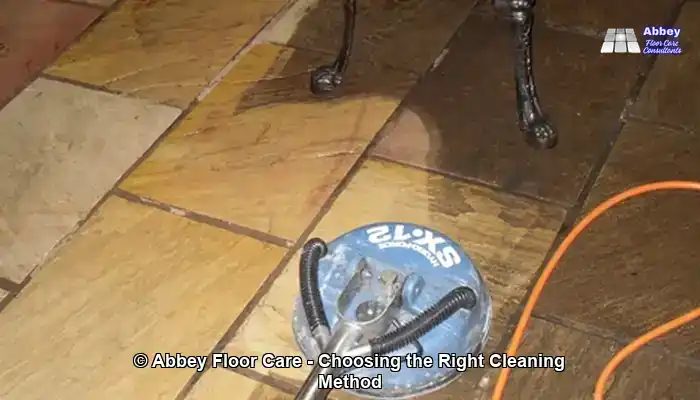
When Are pH-Neutral Cleaners Sufficient for Sandstone Maintenance?
For sandstone floors that are only lightly soiled, a pH-neutral cleaner typically suffices. These products effectively lift surface dirt without affecting the stone’s mineral structure or sealant. They are safe for regular use on both sealed and unsealed sandstone, provided the soil load remains low. Regular application of these cleaners helps preserve the stone’s natural beauty, ensuring its longevity, making them a fundamental part of any cleaning regimen.
When Should Alkaline Cleaners Be Utilised for Heavily Soiled Sandstone?
In cases where sandstone has absorbed oils, grime, or organic residues—particularly in high-traffic zones such as kitchens or entryways—an alkaline cleaner may be necessary. These solutions work by emulsifying embedded soils, effectively releasing them from the porous surface. However, it is critical to rinse thoroughly afterward to avoid any residue buildup. If the cleaner requires a longer dwell time, resealing the floor afterward is advisable to restore protection and prevent future staining issues.
Why Is It Essential to Avoid Acidic or Abrasive Cleaning Products?
Acidic cleaners, like vinegar or limescale removers, can etch sandstone and inflict irreversible damage. Additionally, abrasive powders and stiff brushes may scratch the surface or erode softer areas, leading to further deterioration. Always opt for stone-safe products and cleaning tools that effectively clean without compromising the floor’s integrity and appearance, thus preserving its beauty for years to come.
Your Detailed Guide to Sandstone Floor Restoration Procedures
How to Prepare the Surface and Effectively Eliminate Dust
Start by clearing the area and removing any loose debris using a soft-bristle broom or a vacuum set to hard-floor mode. Avoid dragging furniture or using metal-edged tools, as these can scratch or chip the stone. If the floor has old polish or residue, consider using a stone-safe stripper before beginning the cleaning process to ensure optimal results and a fresh start.
Applying the Cleaner and Safely Agitating the Surface
Select a suitable cleaner based on the level of soil present. For general grime, a pH-neutral solution is ideal. For more intense contamination, use an alkaline cleaner diluted according to the label instructions. Apply the solution evenly, allowing it to dwell for 5 to 15 minutes. Gently agitate with a white pad or a soft brush to lift embedded dirt without causing damage to the stone’s surface.
Rinsing and Drying the Floor Without Leaving Residue
Thoroughly rinse with clean water, using a wet vacuum or multiple passes with a mop to eliminate all residues. Leftover cleaner can leave streaks or dull the finish, undermining your efforts. After rinsing, allow the floor to dry completely before determining whether sealing or polishing is necessary. A dry microfiber mop can expedite the drying process and help prevent water spots that could mar the surface.
Proven Methods for Sealing Sandstone for Long-Term Protection
Understanding the Distinctions Between Impregnating and Topical Sealers
Impregnating sealers penetrate the sandstone’s surface, providing invisible resistance to moisture and stains from within. These sealers are ideal for homeowners who prefer a natural matte finish for their floors. In contrast, topical sealers create a protective layer on the surface, which can enhance colour or provide a satin or glossy sheen. When maintained and reapplied appropriately, topical sealers serve as an excellent option for high-traffic areas or decorative finishes.
How to Apply Sealer Correctly for Optimal Results
Before applying sealer, ensure that the floor is impeccably clean and completely dry. Use a lint-free cloth, sponge, or applicator pad to apply the sealer evenly, working in small sections to guarantee thorough coverage. Allow the product to absorb for the recommended duration and wipe away any excess to prevent streaks or residue. Some sealers may require a second coat, especially on more porous or weathered stone, to ensure comprehensive protection.
When Should You Reseal Your Sandstone Floor and Guidelines for Frequency?
Most sandstone floors benefit from resealing every 2 to 4 years, depending on factors such as foot traffic and moisture exposure. In kitchens, hallways, or entrances, resealing may be necessary more frequently. Conduct a straightforward water-drop test: if water soaks in rather than beads up, it is time to reseal. Regular inspections will ensure the floor remains protected and easier to clean over time, preserving its beauty.
Enhancing the Aesthetic Appeal and Safety of Sandstone Floors
Utilising Colour-Enhancing Sealers to Revitalise Sandstone
If your sandstone floor appears faded or washed out, applying a colour-enhancing sealer can deepen its natural tones and highlight the stone’s unique character. These sealers slightly darken the surface while accentuating the variation in grain and mineral content. They are particularly effective on weathered or pale sandstone but should only be used following thorough cleaning and an adequate drying period to ensure optimal adhesion and results.
How Can You Improve Slip Resistance on Sandstone Floors?
In moisture-prone areas—such as kitchens, bathrooms, or entryways—enhancing slip resistance is crucial for safety. Some sealers come with anti-slip additives, or you can apply a separate non-slip treatment over the sealed surface. Always perform a test in a small area first to confirm that the finish remains visually appealing and easy to maintain while providing the necessary friction for safety.
Exploring Buffing and Polishing Options for Sandstone Floors
While sandstone is not typically polished to a high gloss like marble, light buffing with a soft pad can improve its overall appearance and feel underfoot. For a subtle sheen, consider using a stone-safe polishing compound designed for honed finishes. Avoid wax-based products, as they can trap dirt and create an uneven shine over time, leading to a lacklustre look.
Thorough Maintenance Tips for Sandstone Floors in Highclere Homes
Establishing Effective Weekly and Monthly Cleaning Routines
To preserve sandstone floors in immaculate condition, dry mop regularly with a microfiber pad to eliminate dust and grit. For weekly cleaning, use a diluted pH-neutral cleaner, ensuring to avoid soaking the floor. Additionally, conduct monthly inspections of high-traffic areas for wear and promptly reapply cleaner as needed to uphold the stone’s condition. Excessive wetting should be avoided, as it can weaken sealants over time, leading to more significant maintenance challenges.
Identifying the Best Tools for Ongoing Sandstone Care
Flat microfiber mops are ideal for cleaning sandstone because they effectively trap fine particles without scratching the surface. It is advisable to avoid sponge mops, as they may push dirt further into the stone’s pores. For larger areas, consider using a spray mop with refillable cartridges, allowing for controlled application of stone-safe solutions. Always rinse mop heads thoroughly after each use to prevent residue buildup, ensuring effective cleaning during every session.
How to React Promptly to Spills and Stains on Sandstone Floors
Immediately blot spills using a soft cloth or paper towel to absorb the liquid. Avoid rubbing, as this can spread the stain further into the stone. For oily or coloured spills, apply a small amount of stone-safe cleaner and rinse thoroughly with clean water. If a stain remains, utilise a baking soda and water poultice, ensuring to test it first to confirm it won’t affect the finish. Timely action is crucial to prevent permanent marks and maintain the floor’s fresh appearance.
Common Inquiries Regarding Sandstone Floor Restoration
Can I Use Steam Cleaners on Sandstone Floors?
It is advisable to steer clear of steam cleaners when dealing with sandstone. The high heat and moisture can compromise sealants and force water deep into the stone’s pores, potentially causing long-term damage. Instead, rely on stone-safe liquid cleaners and gentle agitation for effective deep cleaning without risking the integrity of the surface.
What Actions Should I Take If My Floor Is Already Damaged?
If your sandstone floor exhibits deep stains, scratches, or surface erosion, simple cleaning may not be sufficient. In such cases, professional honing or resurfacing may be necessary to restore the stone’s visual appeal. Once the required repairs have been executed, sealing the floor will help prevent future damage and simplify ongoing maintenance, ensuring its longevity.
What Is the Expected Longevity of the Restoration?
With proper sealing and maintenance, a restored sandstone floor can remain in excellent condition for several years. High-traffic areas may require touch-ups or resealing every 2 to 3 years, while lower-traffic zones may often go longer without significant intervention. Regular care is essential for extending the time between major restorations and ensuring the longevity of your flooring investment.
The Article How to Restore Sandstone Floors in Highclere Homes first found on https://www.abbeyfloorcare.co.uk
The Article Restore Sandstone Floors in Highclere Homes Effectively appeared first on https://fabritec.org
The Article Effective Restoration of Sandstone Floors in Highclere Homes Was Found On https://limitsofstrategy.com

